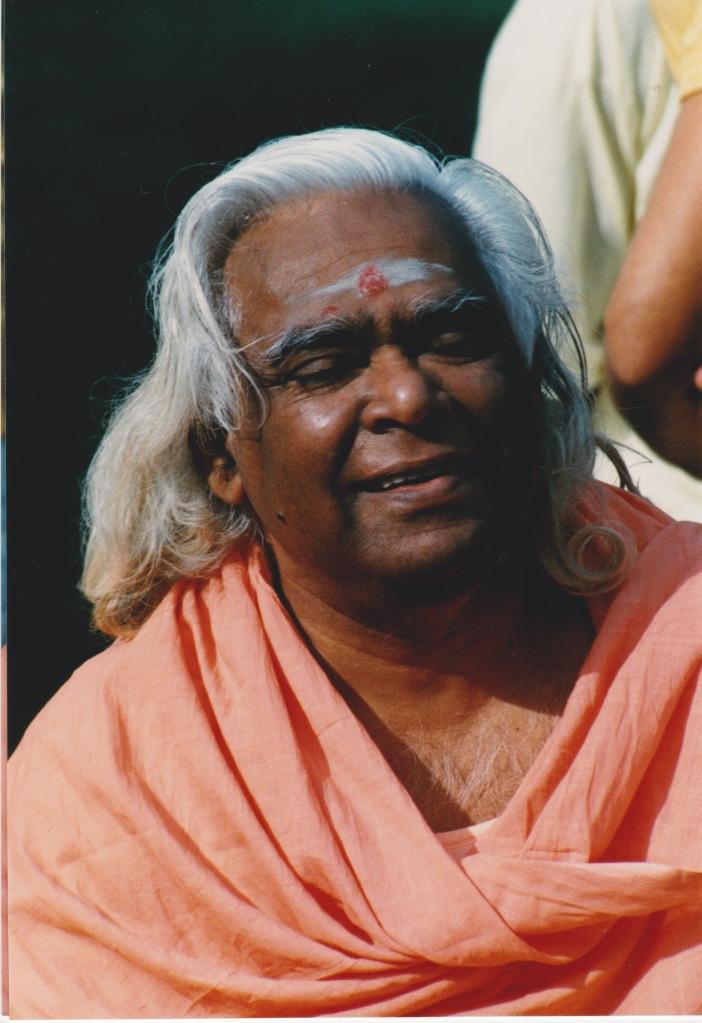POSITIVE THINKING
What is thought? What are techniques to practice positive thinking?
The contents on these Our Teachings webpages are reproduced from the book “Essentials of Yoga Practice and Philosophy” compiled by Swami Sitaramananda.
Below is a testimonial for this book.
A concise guide to Yoga in all of its aspects, healing, mantra, pranayama, asana and meditation as taught by one of the most important Yoga lineages of the modern world, Essentials of Yoga Practice and Philosophy is a helpful resource that all serious Yoga students should keep close by for regular study.
Positive Thinking
Quote: “There is a power contained in thought. This is very subtle, yet it does exist, and is extremely powerful.
Whether a person is aware of it or not, he is constantly transmitting and receiving thoughts…Thoughts control our lives, mold our characters, shape destiny, and affect other people.
When the potential contained in the power of thought is realized, it is the beginning of great spiritual growth in the individual; a great step forward for all of humanity.”
– Swami Vishnudevananda in “Meditation and Mantras”
What is thought?
Thought is a powerful force or energy which can build and can destroy. It is real.
We need to be aware of the nature of our thoughts in order to improve our life and to keep meditating and ultimately realizing our perfect positive nature.
Negative thoughts are like toxins produced by the mind that is not purified. They are only temporary symptoms, not ourselves.
Thought, though invisible, is the origin of action and the material world.
We make a mistake when we think that the material world of objects is more real than the world of thought.
Objects are the manifestations of thoughts; the Sivananda ashram for example, came from the thoughts of Swami Vishnudevananda.
Thought has different wavelengths. Positive thoughts or Sattvic thoughts have higher wavelength and negative thoughts have lower wavelength.
We are constantly swimming in an ocean of thoughts, attracting certain thoughts and repulsing others depending on the quality of the thoughts we keep in our mind.
The best way to improve our life is to constantly keep positive thoughts in our mind and to be able to change negative thoughts to positive thoughts.


Power of thoughts
Be aware of thought influences. We need to be aware of the thought that is surrounding us as it is affecting our thinking.
Try to keep positive company, live and work in positive environments, be in nature, and take yoga retreats to retune our mind to positive thoughts.
Also, learn internal techniques to keep the mind at a high wavelength, so instead of being victims of our environment, we will be agents of positive change. Being in company of the wise is the easiest and most powerful way to shift our thinking to be more positive.
This is called Satsang, company of the wise.
When you live in an ashram founded by enlightened masters, you are in Satsanga. The vibrations of all the chanting, teachings and all the good thoughts of people who visited or lived in the ashram remain in the thought atmosphere and help you.
It is like taking a bath in a pool of pure water. If you mix with polluted thought environments, you will pick up negative thoughts that you would not normally have.
Though Creates Destiny
Thought has the tendency to repeat itself; a negative thought or feeling can become habitual, and also a positive thought can create a positive personality or character that will bring about your future destiny.
So destiny is in your hands, if you know how to control your thoughts.
One needs to be responsible for one’s thoughts because one’s thoughts affect the invisible thought world, and in turn, affect the environment and the people around you positively or negatively.
Collective negative thinking can create wars, while collective positive thinking, like our group here sitting in the ashram, chanting and meditating, sends positive vibrations out to the whole world.
Thought is immediate. So, its effect is immediate, transcending time and space (it is much faster than any supercomputers or the Internet).
Only now, scientists and philosophers are starting to discover the power of thoughts (for example, the Japanese scientist Doctor Emoto has demonstrated the power of thought and emotions on water; as our body is made up of seventy to ninety percent water, you can imagine the effect a negative thought environment can have on us

Positive Thinking Techniques
How to change negative thoughts to positive thoughts?
Everyone has the power to transform their thought from being negative to being positive. As thought is immediate, one needs to master these different tools at our disposal in order to replace appropriate positive thought with the negative thought.
It is good to do it immediately and not to wait too long as the negative thought becomes more serious over time, by the power of repetition.
#1 Be Aware of the negative thought
Learn to recognize the nature of your thought and evaluate its importance by seeing how frequently the thought occurs in your mind.
#2 Have a strong conviction
#3 Try to change the thought
Know that you are your own doctor, and you can help yourself by changing your thoughts.
Know that you have choices, and one method might not work, but others will and your favorite way might not be the appropriate one.
Ultimately, thought is not you, and it is changeable. Allow yourself to be flexible and not stuck in one way.
#4 Apply Classical Yoga
Classical yoga methods (the five points and the four paths) train you in order to prevent negative thoughts, as a sattvic mind is automatically positive.
You can develop positive attitudes toward negative events, and thus transform your frame of mind.


4 Paths of Yoga applied to Positive Thinking
The classical Yoga paths offer some techniques for positive thinking:
Bhakti Yoga
From Bhakti Yoga school of thought, the devotee practices faith and self surrender to God’s will.
He believes that “everything happens all the time for the best”, and says to himself: “It’s not my will, it’s God’s will, and I surrender to God’s will”.
He practices chanting and repeats mantras with devotion as well as endeavors to see God in all beings and in Nature.
Raja Yoga
From Raja Yoga we learn a few techniques to directly deal with our mind:
– replacing negative thoughts with opposite thoughts
– being indifferent to negative thoughts
– sublimating, channeling, or transforming it to a less harmful thought.
– focusing the mind on positive only
– practicing visualization of yourself endowed with the positive qualities that you seek
– Repeatedly self-affirming with helpful words
– maintaining cheerful attitudes
– being careful of impatience when trying to change, one thought at a time
– staying vigilant to the fact that a negative thought will bring in its associates, and that a positive thought will bring in a train of thoughts which will uplift you, practicing Satsanga or positive company.
Karma Yoga
In the Karma Yoga perspective, the Karma Yogi constantly reminds himself, amidst action, that, “I am not the doer, I am only an instrument.
I offer the results of my work”, and, “I do the best I can, and I do my duty.”
Jnana Yoga
In the Jnana Yoga philosophical standpoint, the Jnana Yogi reminds himself, “I am only the silent witness to this; everything is but an illusion
Everything is changing anyway, this also shall pass
I am the Self of all, therefore no one can hurt me nor take away anything from me
I am Sat Chit Ananda – pure consciousness, bliss absolute, therefore nothing can touch me.
We are one, this person is my own self, the whole world is my own self.”
By thinking so, the Yogi removes the root cause of all negativities and remains detached.
Yoga Teacher Training Course
Check out our 200-hour Yoga Alliance certified Yoga Teacher Training Courses offered twice a year in California, 3x in Vietnam, once in China and once in Japan.
Foundational Courses
Choose from upcoming courses for beginners and intermediate level students.
Yoga Vacation
Rejuvinate your body and mind. Experience and progress with daily Yoga classes. Learn the 12 basic asanas and pranayama. Enjoy daily meditation, chanting, and organic vegetarian meals.
Check out our Blog
Our Sivananda Yoga Farm Blog has numerous articles, videos, and talks given by our senior teachers over the years.
OUR TEACHINGS
The contents you will find here are reproduced from the book “Essentials of Yoga Practice and Philosophy” compiled by Swami Sitaramananda.
Satsang
What is Satsang? What is Meditation? What is Kirtan Chanting?
5 Points of Yoga
Exercise, Breathing, Relaxation, Diet, Positive thinking and Meditation
Health
What is True Health? What is health of body, mind, and spirit?
Prana
What is Prana? How can I access prana? What is kundalini energy?
Raja Yoga
What is Raja Yoga? What are the eight limbs? What is ashtanga yoga?
Jnana Yoga
Who am I? What is Vedanta Philosophy? What is Sat-Chit-Ananda?
Mantras
What is a mantra? What is sanskrit? How do I get a mantra?
Yoga Poses
What is in a basic Sivananda class? What are the benefits? What are some guidelines?
Yoga
What is Yoga? Where did Yoga come from? What is Classical Yoga?
Life
What is the meaning of Life? What is Freedom? What is Happiness?
Mind
What is the mind? How does the mind work? Am I my mind?
Positive Thinking
What is thought? What are techniques to practice positive thinking?
Karma Yoga
What is Karma? What is Karma Yoga? How to practice karma yoga?
Bhakti Yoga
What is True Love? Who is God? What is an inner Bhava?
Kirtan Chanting
What is Kirtan Chanting? How does it work? What do the chants mean?
Ayurveda
What is ayurveda? What are the 3 doshas? What is disease according to ayurveda?